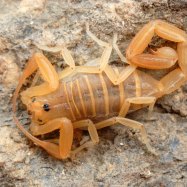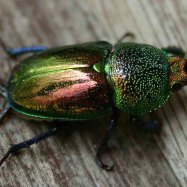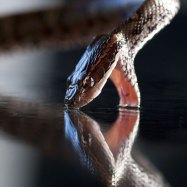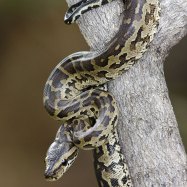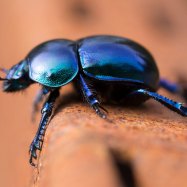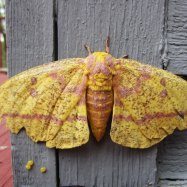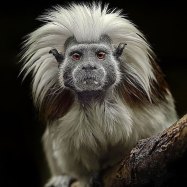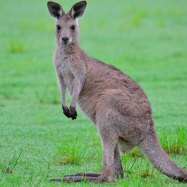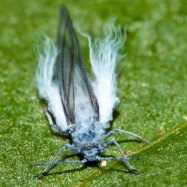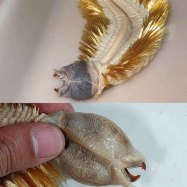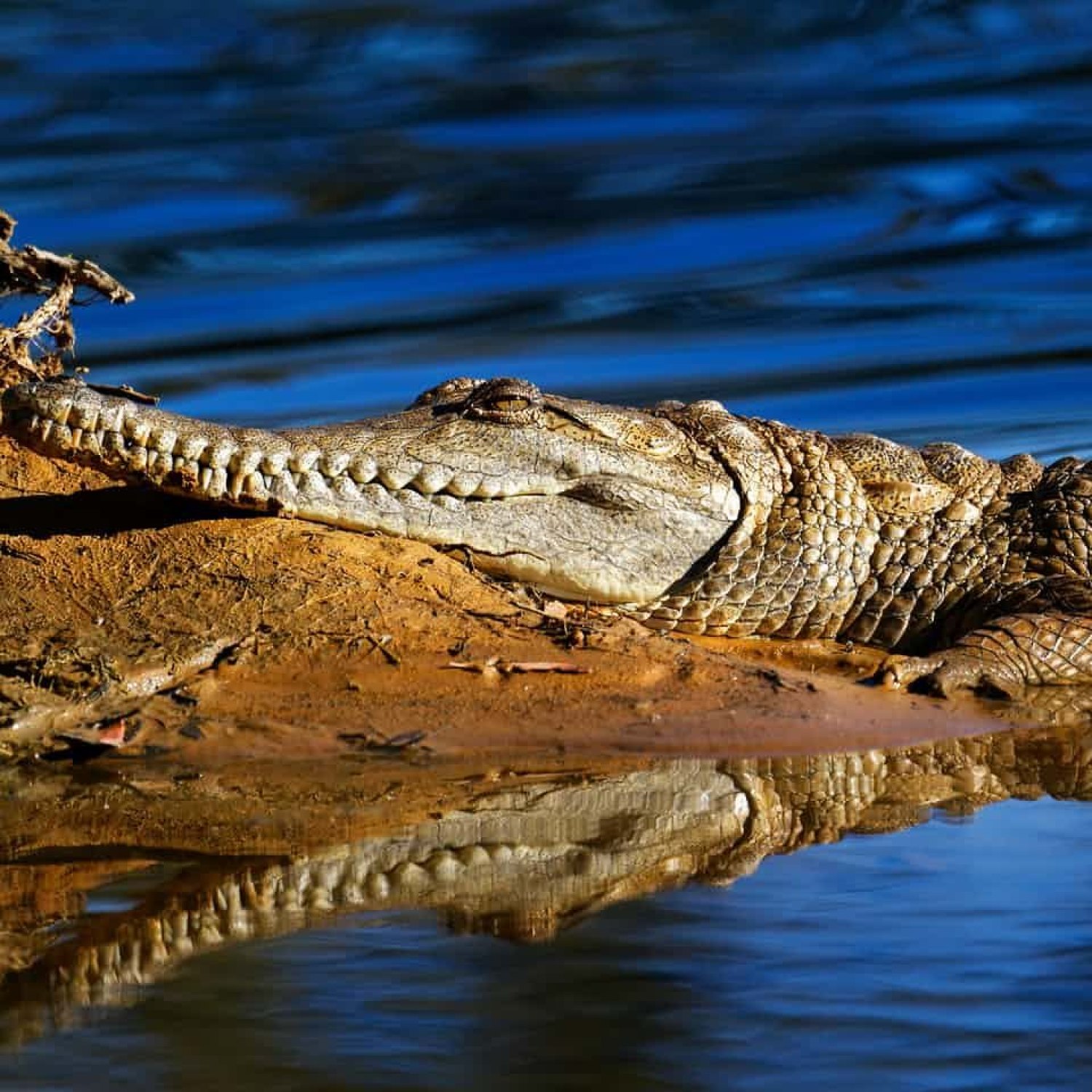
Freshwater Crocodile
Up to 3 to 3.5 meters
The Freshwater Crocodile, found in Northern Australia, belongs to the Crocodylidae family. With a body shape that is long, slender, and streamlined, they can grow up to 3 to 3.5 meters in length. Keep a safe distance from these creatures while exploring their natural habitat. #FreshwaterCrocodile #Australia #Wildlife
Animal Details Summary:
Common Name: Freshwater Crocodile
Kingdom: Animalia
Habitat: Rivers, lakes, billabongs, and estuaries
Freshwater Crocodile: A Stealthy Predator of Northern Australia
The word 'crocodile' often evokes fear in people's minds, conjuring up images of ferocious beasts lurking in dark and murky waters. However, not all crocodiles are the same. The Freshwater Crocodile (Crocodylus johnsoni) is a lesser-known but equally formidable species that inhabits the northern regions of Australia and southern New Guinea.Belonging to the kingdom Animalia and phylum Chordata, the Freshwater Crocodile is a reptile that falls under the class Reptilia and order Crocodilia Freshwater Crocodile. It is a member of the family Crocodylidae, which also includes the larger and more well-known species, the Saltwater Crocodile. While both species have a similar appearance, the Freshwater Crocodile has its own unique characteristics and fascinating features that sets it apart from its larger cousin.
Habitat and Distribution
The natural habitat of the Freshwater Crocodile includes rivers, lakes, billabongs, and estuaries. They can be found in freshwater bodies throughout Northern Australia and southern New Guinea. In Australia, they can be found as far south as the Mary River in Queensland, while in New Guinea, they are restricted to the southern lowlands.One of the reasons the Freshwater Crocodile is commonly found in freshwater bodies is because of its ability to regulate its salt intake. Unlike the Saltwater Crocodile, which can only survive in saltwater, the Freshwater Crocodile has specialized salt glands that allow it to maintain a healthy salt balance, making it well adapted to living in freshwater environments. This also makes it easier for the species to inhabit areas with fluctuating water levels, unlike other crocodile species that require a consistent water supply.
Feeding Habits
As a carnivorous species, the Freshwater Crocodile has a diet that consists mainly of other vertebrates such as fish, insects, crustaceans, and sometimes small mammals and reptiles Feist. They are opportunistic predators and will often lie in wait for their prey before ambushing them with their powerful jaws.One of the most interesting feeding behaviors of the Freshwater Crocodile is its tendency to utilize 'lure fishing'. This is when the crocodile will dangle its elongated snout above the water, mimicking a stick or branch, to attract birds. When the unsuspecting bird comes close, the crocodile will swiftly strike and capture its prey. This behavior is rarely observed in other crocodile species, making it a unique and fascinating characteristic of the Freshwater Crocodile.
Physical Characteristics
The Freshwater Crocodile may not be as large as its saltwater counterpart, but it still packs a powerful punch. It has a long, slender, and streamlined body, allowing it to move swiftly and silently through the water. These crocodiles can grow up to 3 to 3.5 meters in length, with males being larger than females.One of the most distinctive physical features of the Freshwater Crocodile is its coloration. They are dark greenish-brown in color, with light-colored bellies. This helps them blend in with their surroundings, making them difficult to spot by both predators and prey.
Their tough, scaly skin is another noteworthy characteristic. It provides them with protection from predators and also helps them retain moisture in dry conditions. In addition, their powerful jaws and sharp teeth allow them to catch and hold onto their prey effectively.
The Freshwater Crocodile's Role in the Ecosystem
Despite their fearsome reputation, Freshwater Crocodiles play an important role in their ecosystem as top predators. They help regulate the population of their prey, and their nesting habits also create new habitats for other animals. Their droppings also provide nutrients and food for other aquatic creatures.In addition, crocodiles act as 'ecosystem engineers', shaping and changing the physical environment around them. They create riverbanks and flatten vegetation through their movement, which can affect water flow and erosion rates. This in turn creates diverse habitats for other plants and animals.
Conservation Status
Freshwater Crocodiles are classified as a species of 'Least Concern' on the International Union for Conservation of Nature's (IUCN) Red List. This is attributed to their large population and wide distribution throughout Northern Australia and southern New Guinea.However, they are still vulnerable to habitat loss and human activity. In the past, they have also been heavily hunted for their skins, but laws and regulations have now been put in place to prevent their overexploitation. It is essential to continue monitoring and conserving these creatures to maintain a healthy ecosystem and preserve their presence in the wild.
Interesting Facts about the Freshwater Crocodile
- The scientific name of the Freshwater Crocodile, Crocodylus johnsoni, was named in honor of William Johnson, a Western Australian naturalist.- Their light-colored bellies not only help them blend in with their environment, but they also act as a camouflage for the crocodile when seen from below by potential predators or prey.
- While their eyes and nostrils are positioned high on their heads, enabling them to see and breathe while submerged, they have a special clear third eyelid that protects their eyes while underwater.
- Freshwater Crocodiles can be found in a range of different water bodies, including hot springs and swimming holes, making them one of the most widespread crocodile species in the world.
In Conclusion
The Freshwater Crocodile may not have the size or ferociousness of its larger cousin, the Saltwater Crocodile, but it is a remarkable and fascinating species in its own right. Its adaptability, unique physical features, and important role in the ecosystem make it a significant part of Australia's natural heritage.Despite their curious and sometimes fearsome reputation, these creatures must be respected and conserved to maintain a healthy balance in the natural world. So, the next time you come across a freshwater body in Northern Australia, remember to look out for this stealthy predator, and be in awe of its incredible survival skills.

Freshwater Crocodile
Animal Details Freshwater Crocodile - Scientific Name: Crocodylus johnsoni
- Category: Animals F
- Scientific Name: Crocodylus johnsoni
- Common Name: Freshwater Crocodile
- Kingdom: Animalia
- Phylum: Chordata
- Class: Reptilia
- Order: Crocodilia
- Family: Crocodylidae
- Habitat: Rivers, lakes, billabongs, and estuaries
- Feeding Method: Carnivorous
- Geographical Distribution: Northern Australia and southern New Guinea
- Country of Origin: Australia
- Location: Northern Australia
- Animal Coloration: Dark greenish-brown with light-colored bellies
- Body Shape: Long, slender, and streamlined
- Length: Up to 3 to 3.5 meters

Freshwater Crocodile
- Adult Size: Up to 3 to 3.5 meters
- Average Lifespan: Around 70 years
- Reproduction: Oviparous (lays eggs)
- Reproductive Behavior: Mating occurs during the wet season
- Sound or Call: Loud, low-frequency growls
- Migration Pattern: Semi-nomadic
- Social Groups: Solitary, but can be seen in small groups
- Behavior: Mostly nocturnal and ambush predators
- Threats: Habitat loss, pollution, illegal hunting
- Conservation Status: Least Concern
- Impact on Ecosystem: Maintains ecological balance as top predators
- Human Use: Hunting, tourism
- Distinctive Features: Narrow snout and long, sharp teeth
- Interesting Facts: Freshwater crocodiles are more tolerant to freshwater and can live in freshwater habitats, unlike saltwater crocodiles which prefer saltwater or brackish environments
- Predator: Saltwater crocodile, humans
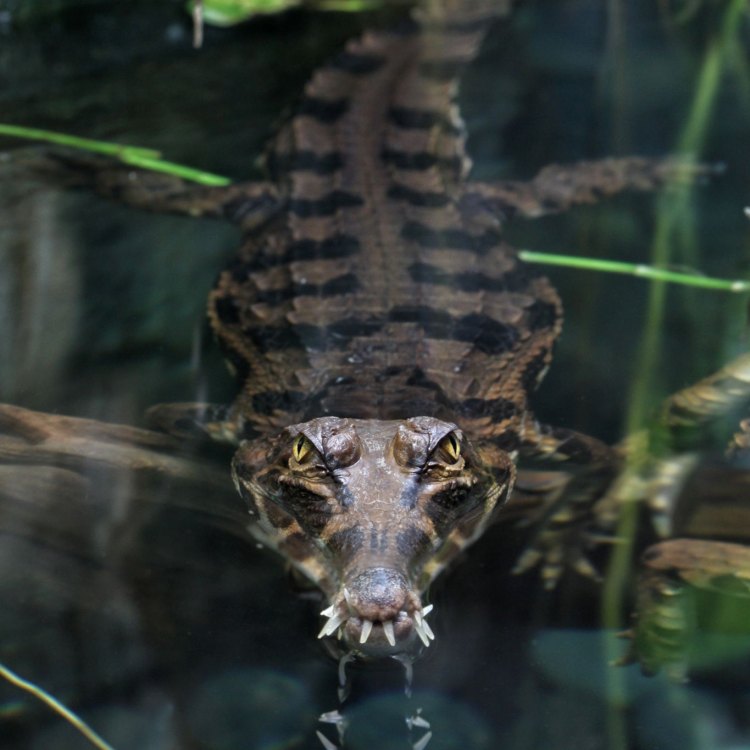
Crocodylus johnsoni
The Mighty Freshwater Crocodile: Exploring the Life of Australia's Solitary Ambush Predator
Deep in the lush waters of Australia's northern rivers and swamps, lives one of the world's oldest and most fascinating creatures – the freshwater crocodile. This formidable apex predator is a marvel of evolution, armed with distinctive features and hunting tactics that have made it a force to be reckoned with in its ecosystem. From its long lifespan to its unique reproductive behavior, there is much to discover about this creature that has captured the fascination of biologists, conservationists, and even tourists.Let's delve into the life of the mighty freshwater crocodile, and explore its habits, threats, and role in the delicate balance of its environment PeaceOfAnimals.Com.
Size and Lifespan
The freshwater crocodile, also known as the "freshie" or "freshwater johnny", can grow up to 3 to 3.5 meters in length. This makes them relatively smaller than their intimidating saltwater cousins, which can reach up to 7 meters in length.
Despite their smaller size, freshwater crocodiles have a surprisingly long lifespan, with some individuals living up to 70 years in the wild. This is due to their slow metabolic rate, which allows them to conserve energy and survive long periods without food.
Reproduction and Behavior
Freshwater crocodiles are oviparous, which means they lay eggs to reproduce. The females lay their eggs in a mound of vegetation and soil, which they carefully guard until they hatch. This nesting behavior is crucial for the survival of their offspring, as the eggs need the right temperature and humidity to develop.
Mating in freshwater crocodiles occurs during the wet season, which is usually from December to March in Australia Fainting Goat. During this time, males become more aggressive and territorial, competing for the attention of females with loud, low-frequency growls that can be heard from a considerable distance.
Social Dynamics
Despite their solitary nature, freshwater crocodiles can be seen in small groups, particularly around nesting areas. These groups are not permanent, and individuals may leave after the nesting season is over.
Males tend to have larger territories, while females have smaller ranges that overlap with other females. However, there is little evidence of any social hierarchy or interaction between individuals, suggesting that freshwater crocodiles are mostly solitary animals.
Behavior and Habitat
Freshwater crocodiles are mostly nocturnal, meaning they are most active at night. This behavior helps them conserve energy and avoid competition with other predators, such as birds of prey and larger reptiles.
As ambush predators, freshwater crocodiles rely on stealth and surprise to catch their prey. They are known to lay motionless in water or near the water's edge, waiting for unsuspecting animals to come close enough for them to strike. This behavior has earned them the nickname "silent assassins" among locals.
Threats and Conservation
The biggest threat to freshwater crocodiles is the loss of their habitat due to human development. These animals require large bodies of freshwater, such as rivers, swamps, and billabongs, to thrive. But as urbanization and agriculture continue to expand, these vital water sources are decreasing, and the freshwater crocodile population is being affected.
In addition to habitat loss, pollution and illegal hunting also pose significant threats to the survival of freshwater crocodiles. Their valuable skin is often used for leather products, and they are sometimes hunted for their meat. These activities have led to a decline in their population in certain areas.
Fortunately, freshwater crocodiles are currently listed as Least Concern on the IUCN Red List, which means their population is stable. However, continued effort is needed to monitor and protect their habitats, especially in areas where their numbers are declining.
Impact on Ecosystem
As top predators, freshwater crocodiles play a crucial role in maintaining the ecological balance in their environment. They control the population of their prey species, which are often herbivores that graze on vegetation and could potentially damage their habitat if left unchecked.
The presence of freshwater crocodiles also indicates a healthy ecosystem, as they are good indicators of the overall health of their environment.
Human Use and Interesting Facts
Freshwater crocodiles have had a long history of interactions with humans. Indigenous Australians have coexisted with these creatures for thousands of years, even considering them to be sacred animals. They have been the subject of many cultural stories and artwork, as well as a source of food and materials for tools and ceremonies.
Today, the freshwater crocodile is a source of income for local communities through tourism. Their elusive nature and iconic status make them a popular attraction for tourists, with guided boat tours and cultural experiences available in many areas.
One of the most interesting features of freshwater crocodiles is their ability to tolerate freshwater habitats. Unlike their saltwater cousins, who prefer saltwater or brackish environments, freshwater crocodiles can live in a variety of freshwater habitats, such as rivers, lakes, and even man-made bodies of water like farm dams.
Predators
Just like any other predator, freshwater crocodiles also have natural enemies. The biggest threat to them is the saltwater crocodile, which is known to prey on smaller freshwater crocodiles. But perhaps the most significant danger to freshwater crocodiles comes from humans, who have hunted them for their skin and meat.
While human-wildlife conflicts do occur, it is important to note that freshwater crocodiles are mostly shy animals that avoid humans. Attacks on humans are rare and are often a result of human interference, such as feeding or approaching too closely.
In conclusion, the freshwater crocodile is a fascinating creature that has thrived in its environment for millions of years. Its unique features, behavior, and long lifespan make it a species worth studying and protecting. As we continue to coexist with these magnificent animals, it is crucial to ensure their survival and conservation for future generations to admire and learn from.
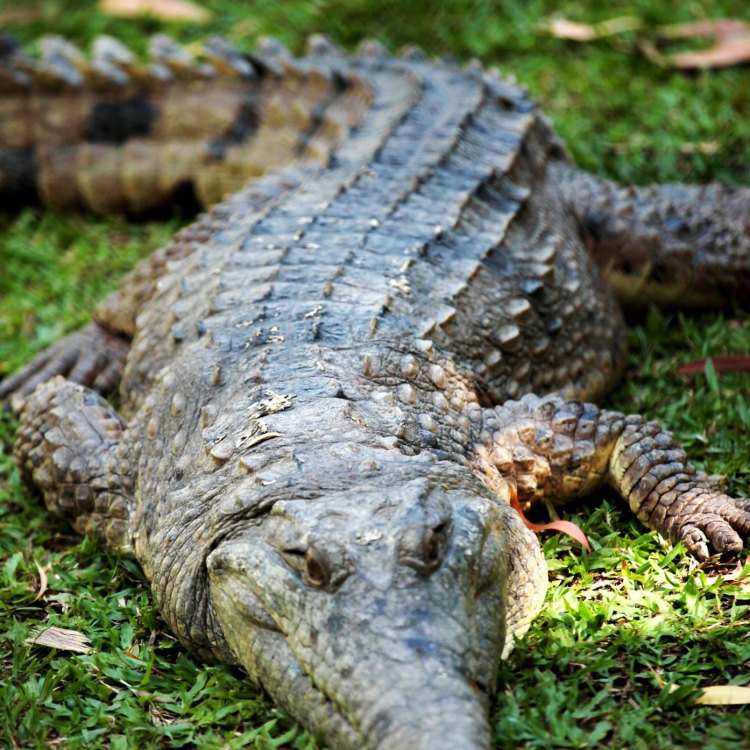
Freshwater Crocodile: A Stealthy Predator of Northern Australia
Disclaimer: The content provided is for informational purposes only. We cannot guarantee the accuracy of the information on this page 100%. All information provided here may change without prior notice.

